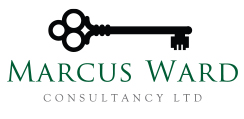VAT Basics
Return boxes explained – what goes where? A general overview.
Box 1 VAT due in the period on sales and other outputs
The amount of VAT due on all goods and services supplied in the period covered by the return. This is output tax. The value of output tax may be affected by VAT:
- on credit notes issued
- when refunds are made
- on goods taken in part-exchange
- underdeclared or overdeclared on previous returns within certain de minimis
VAT may also be due on supplies outside the mainstream of a business, eg:
- fuel used for private motoring where VAT is accounted for using a scale charge
- the sale of stocks and assets
- goods taken out of the business for private use
- VAT due under a reverse charge
- supplies to staff
- gifts of goods that cost more than £50
- certain distance sales to Northern
- commission received for selling something on behalf of a third-party
- VAT shown on self-billed invoices issued by your customer
- VAT due on imports accounted for through postponed VAT accounting
Box 2 VAT due in the period on acquisitions of goods made in Northern Ireland from the EU
Since 1 January 2021, a business is only allowed to make acquisitions on goods brought into Northern Ireland from the EU. For acquisitions, the VAT due on all goods and related costs bought from VAT-registered suppliers in the EU should be included.
Box 3 total VAT due
Show the total VAT due, the total of boxes 1 and 2. This is the total output VAT for the period.
Box 4 VAT reclaimed in the period on purchases and other inputs
Show the total amount of deductible VAT charged on business purchases. This is input tax for the period.
This will include:
- VAT paid on imports
- imports accounted for through postponed VAT accounting.
- claims for bad debt relief (BDR)
- payments on removals from a warehousing regime or a free zone
- VAT shown on self-billed invoices issued by you
- acquisitions of goods into Northern Ireland from the EU
Certain VAT paid by a business should not be included in box 4, some examples here.
Adjustments to the amount claimed may be required for
- VAT on any credit notes received
- certain VAT underdeclared or overdeclared on earlier returns
- partial exemption
Box 5 net VAT to pay or reclaim
Deduct the smaller from the larger of values in boxes 3 and 4 and enter the difference in box 5.
If the figure in box 3 is more than the figure in box 4, the difference is the amount payable to HMRC. If the figure in box 3 is less than the figure in box 4, HMRC will repay this.
Box 6 total value of sales and all other outputs excluding any VAT
Show the total VAT exclusive value of all business sales and other specific outputs. These will include:
- zero-rated, reduced rate and exempt supplies
- fuel scale charges
- exports
- distance sales to Northern Ireland which are above the distance selling threshold or, if below the threshold the overseas supplier opts to register for VAT in the UK
- reverse charge transactions
- supplies which are outside the scope of UK VAT (this is debateable, but HMRC require this information)
- deposits that an invoice has been issued for
- net value of the road fuel scale charge
Box 7 total value of purchases and all other inputs excluding any VAT
Show the total net value of expenditure. This will include:
- imports
- acquisitions of goods brought into Northern Ireland from the EU
- reverse charge transactions
- capital assets
Boxes 8 and 9 only need to be completed goods cross the Northern Ireland border.
Box 8 value of supplies of goods to the EU
For supplies of goods and related costs, excluding any VAT, from Northern Ireland the EU made from 1 January 2021.
Box 9 value of acquisitions of goods from the EU
For acquisitions of goods and related costs, excluding any VAT, from the EU into Northern Ireland from 1 January 2021.
NB: If a business uses one of the following schemes there may be different rules for completing some of the boxes on returns.
- flat rate scheme
- cash accounting
- annual accounting
- margin schemes for second hand goods, works of art, antiques and collectors’ items
- payments on account.
